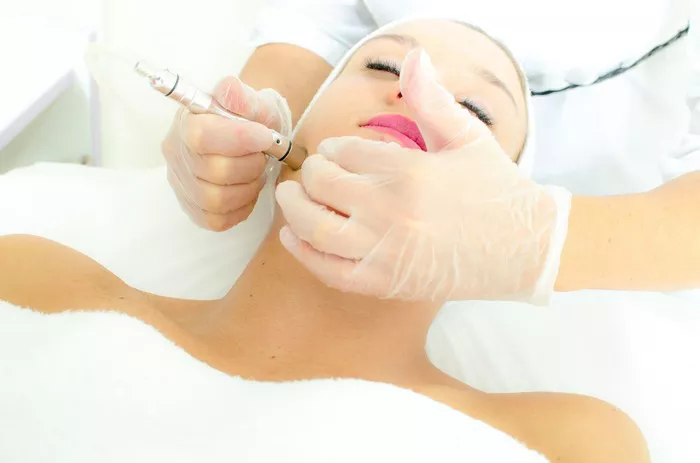Microdermabrasion is a popular non-invasive cosmetic procedure that helps exfoliate and rejuvenate the skin. It is known for its ability to improve skin texture, reduce fine lines, minimize pores, and promote a more radiant complexion. If you’re considering microdermabrasion, it’s important to understand how often you should receive the treatment to maximize its benefits and maintain healthy, glowing skin. In this article, we will explore the recommended frequency of microdermabrasion and the factors that influence the treatment schedule.
Understanding Microdermabrasion
Microdermabrasion is a mechanical exfoliation technique that involves removing the outermost layer of dead skin cells using a handheld device. The device typically sprays fine crystals or uses a diamond-tipped wand to gently exfoliate the skin’s surface. The procedure is painless and does not require any downtime, making it a popular choice for individuals seeking quick and effective skin rejuvenation.
Microdermabrasion can address a variety of skin concerns, including:
- Dull and Uneven Skin Tone: The procedure helps remove dead skin cells and promotes the growth of fresh, healthy skin, resulting in a more even and vibrant complexion.
- Fine Lines and Wrinkles: Microdermabrasion can help reduce the appearance of fine lines and wrinkles by stimulating collagen production and improving skin elasticity.
- Sun Damage: The treatment can minimize the effects of sun damage, including dark spots, hyperpigmentation, and uneven skin tone.
- Acne and Acne Scarring: Microdermabrasion can help improve mild acne and reduce the appearance of acne scars by exfoliating the skin and promoting cell turnover.
- Clogged Pores and Blackheads: The exfoliating action of microdermabrasion helps unclog pores and remove blackheads, leading to clearer, smoother skin.
Recommended Frequency of Microdermabrasion
The frequency of microdermabrasion treatments depends on various factors, including the individual’s skin type, skin concerns, and the treatment’s intensity. Generally, a series of treatments is recommended to achieve the best results. Here are some guidelines for the recommended frequency of microdermabrasion:
-
Initial Series
To achieve noticeable improvements in the skin’s texture and appearance, an initial series of microdermabrasion treatments is typically recommended. This series typically consists of 4 to 6 treatments, spaced 2 to 4 weeks apart. The interval between sessions allows the skin to heal and regenerate, maximizing the benefits of each treatment.
-
Maintenance Treatments
Once the initial series is complete, maintenance treatments can help sustain the results and promote ongoing skin health. Maintenance treatments are usually scheduled every 4 to 8 weeks, depending on the individual’s skin condition and goals. Regular treatments help maintain the improved skin texture, address any new concerns, and promote a fresh, youthful complexion.
-
Skin Concerns and Goals
The frequency of microdermabrasion can vary based on the specific skin concerns and goals of the individual. For example, individuals with more severe acne scarring or hyperpigmentation may benefit from more frequent treatments. Consulting with a skincare professional will help determine the appropriate treatment schedule based on your unique skin needs.
Factors Influencing the Treatment Schedule
Several factors can influence the recommended frequency of microdermabrasion treatments. These factors should be taken into consideration to optimize the treatment schedule and achieve the desired results. Some key factors include:
- Skin Sensitivity: Individuals with sensitive skin may require longer intervals between treatments to allow the skin to recover fully. The intensity of the treatment can also be adjusted to accommodate sensitive skin types.
- Skin Concerns and Goals: The severity of the skin concerns and the desired outcomes play a significant role in determining the treatment schedule. More pronounced concerns may require more frequent treatments initially to achieve noticeable improvements.
- Skin Type: Different skin types react differently to microdermabrasion. Individuals with oily or acne-prone skin may benefit from more frequent treatments, while those with dry or sensitive skin may require longer intervals between sessions.
- Post-Treatment Reactions: Monitoring the skin’s response to microdermabrasion is crucial in determining the appropriate treatment frequency. If the skin shows signs of irritation or excessive redness after a treatment, it may be necessary to extend the interval between sessions.
- Professional Recommendation: Consulting with a skincare professional or an aesthetician is highly recommended to assess your skin’s condition, discuss your goals, and receive personalized recommendations regarding the optimal treatment frequency.
Maintaining Results and Skincare Routine
To maximize the benefits of microdermabrasion and maintain healthy, glowing skin, it is important to complement the treatments with a proper skincare routine. Here are some tips to incorporate into your skincare regimen:
- Sun Protection: Apply a broad-spectrum sunscreen with a high SPF daily to protect your skin from harmful UV rays. Sunscreen helps prevent sun damage and maintain the results of microdermabrasion.
- Moisturize: Hydrate your skin by using a moisturizer suitable for your skin type. Moisturizing helps nourish the skin and maintain its natural moisture barrier.
- Gentle Cleansing: Cleanse your skin twice daily with a gentle cleanser to remove dirt, impurities, and makeup without stripping the skin of its natural oils.
- Avoid Harsh Products: Avoid using harsh skincare products, such as aggressive exfoliants or abrasive scrubs, as they can irritate the skin and compromise the results of microdermabrasion.
- Healthy Lifestyle Habits: Maintain a healthy lifestyle by eating a balanced diet, staying hydrated, getting enough sleep, and managing stress. These factors contribute to overall skin health and can enhance the results of microdermabrasion.
Conclusion
Microdermabrasion is a popular cosmetic treatment that offers numerous benefits for the skin. To achieve optimal results, an initial series of treatments is typically recommended, followed by maintenance treatments at regular intervals. The treatment schedule depends on various factors, including skin type, skin concerns, and individual goals. Consulting with a skincare professional will help determine the appropriate frequency of microdermabrasion treatments based on your unique needs. By following a consistent skincare routine and incorporating healthy lifestyle habits, you can maintain the results of microdermabrasion and enjoy healthy, glowing skin for the long term.


